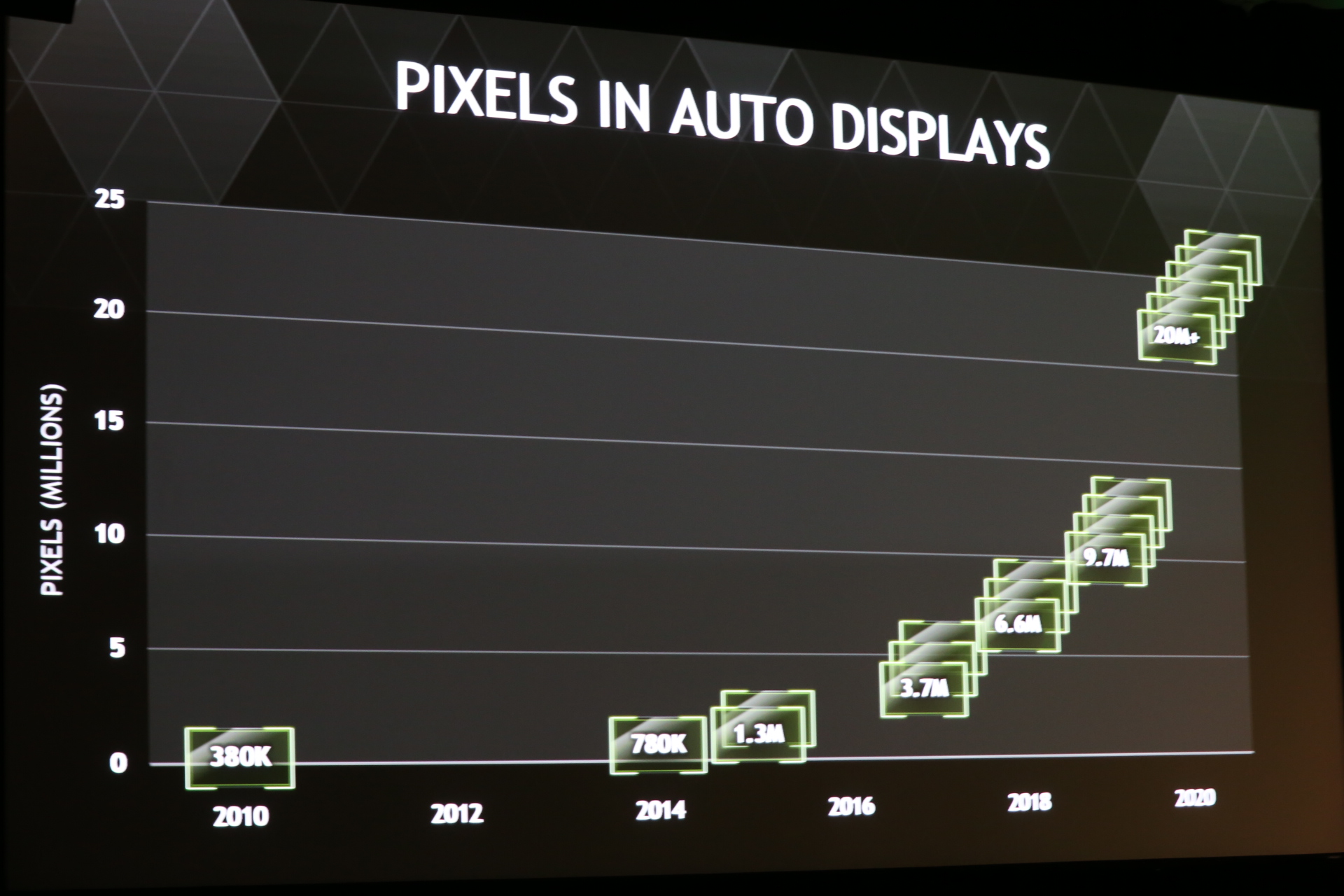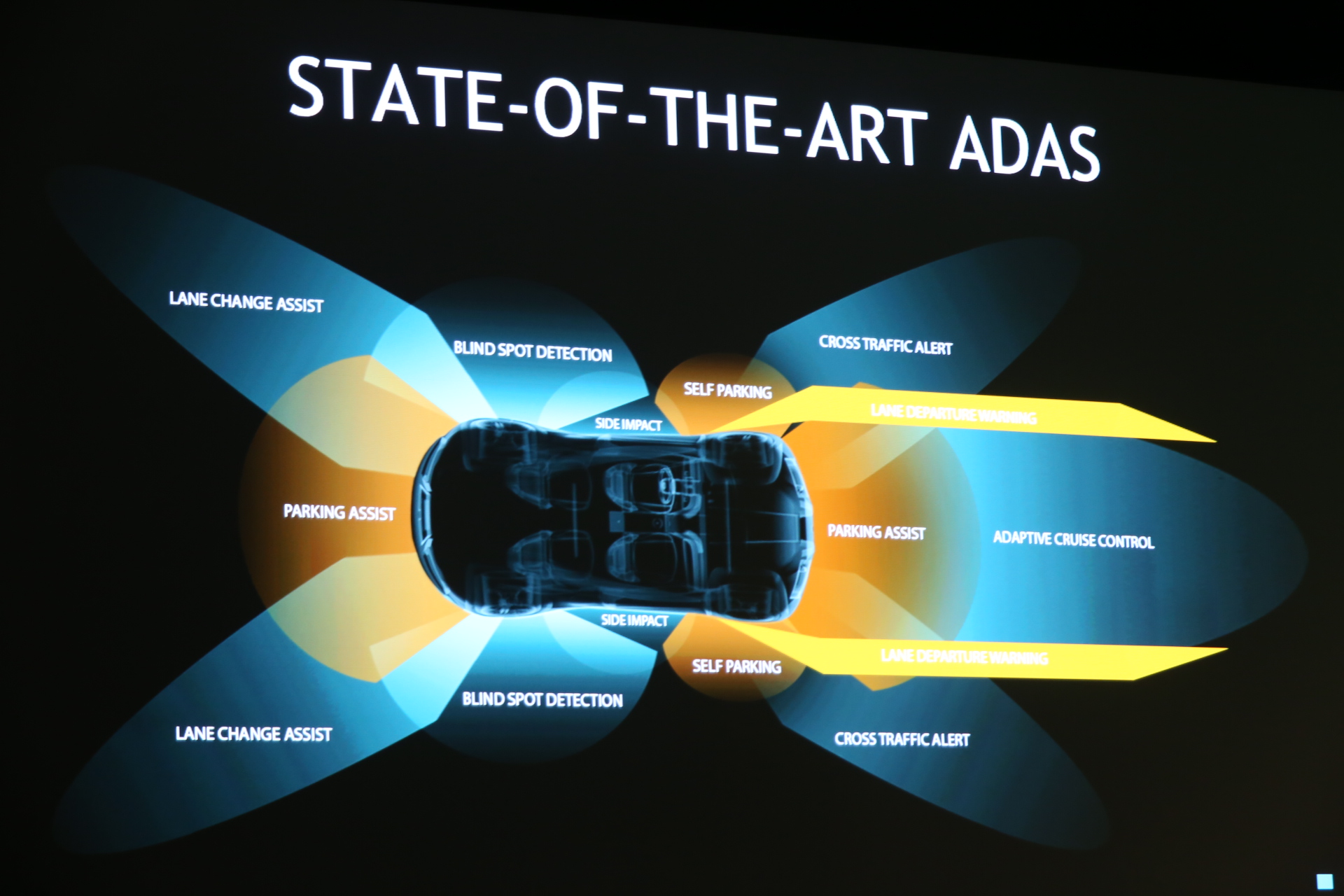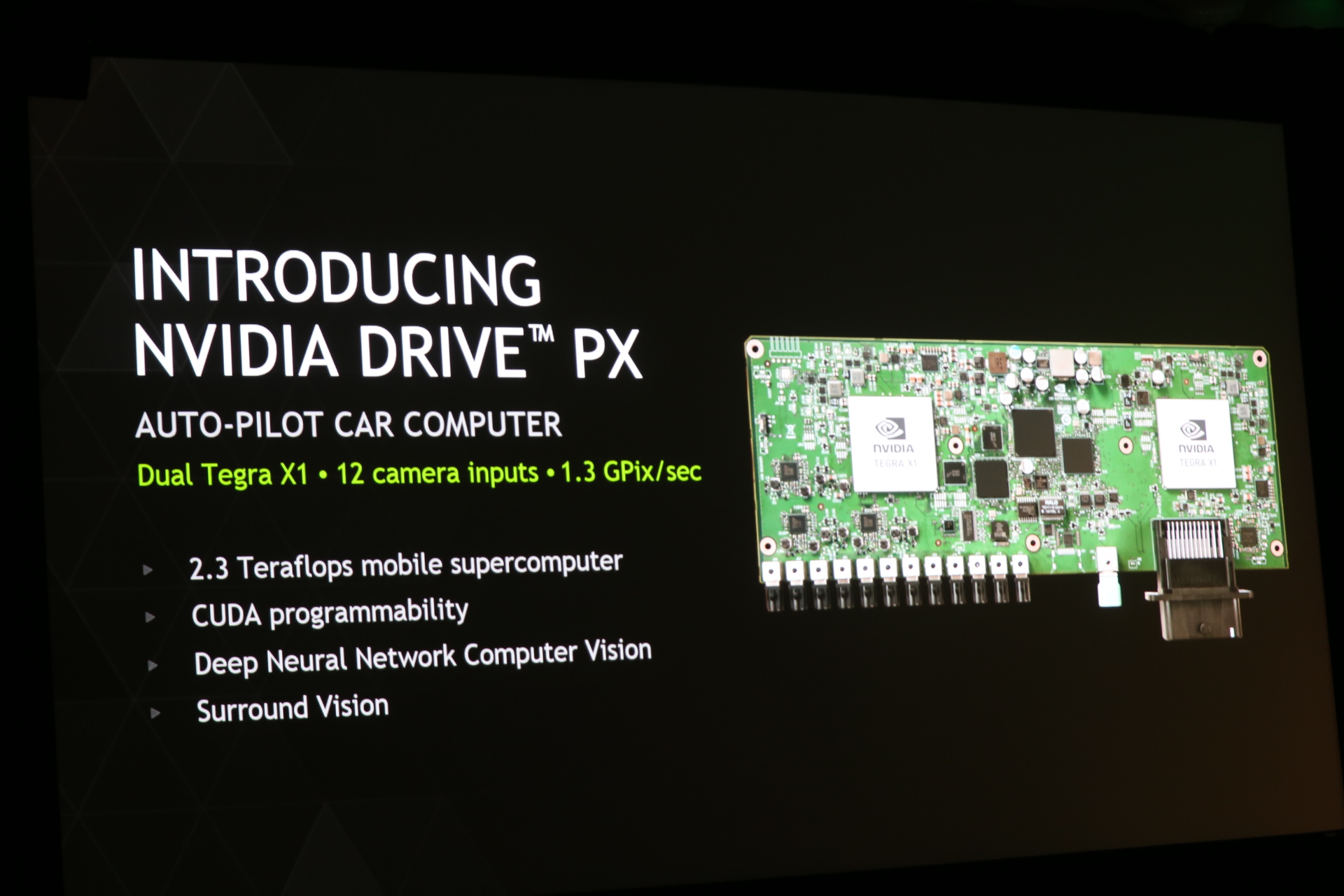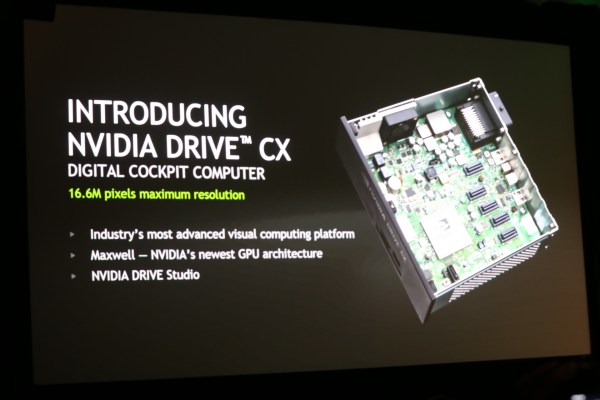At its CES press conference, Nvidia today announced the Drive CX, a digital cockpit for cars that is based on the company’s new X1 processor. It will include an advanced visual computing architecture. It can power 16.6 megapixels for cars that have multiple screens — that significantly more than even the iMac 5K Retina display’s 15 million pixels.
While the CX focuses on powering the infotainment system, the company also announced the Drive PX today — its image processing platform for building self-driving cars.
“We believe the future car will pack an enormous amount of compute capability,” Nividia said today. Future cars will have “more computing horsepower than anything you own today.” In Nvidia’s imagination, your next car will have a huge number of displays. “We imagine these displays will replace many of the current capabilities of your car. Your mirror could become a smart display. The pillars around your car could become screens.”

Today’s cars also have relatively low-resolution screens. Right now, even a high-end car (not counting, say, Tesla’s iPad-like multimedia and navigation display) might have a single megapixel on its infotainment systems. Nvidia’s new chip would be able to power far more than that – as many as four Full HD (2 megapixels) simultaneously or even two 4K screens if you really wanted an absurdly nice movie experience for the kids in the back seat.
Besides the screens, the platform can also power features like speech recognition and image recognition.
Nvidia showed off in its keynote today a number of rather playful examples for what your future car dashboard could look like. One example was dynamically rendered 3D interfaces for your speedometer and navigation, with the ability to shift between different “textures” on-the-fly — one day you could have a Tron-like metal-and-neon look, and the next coat everything in bamboo. It’s not exactly a major selling point for a high-end car, but this new platform will allow the likes of Ford and Chevy to bring more interesting and useful interfaces to the car in the next few years.
Nvidia will make a reference platform of the Drive CX available to car manufacturers.

Besides the new dashboard experience, Nvidia also today talked about how its platforms can enable new driver assistance tools. Right now, we are seeing many cars that include radar, ultrasonic sensors and image-recognition technologies. As the company noted, however, radar and ultrasonic sensors are now slowly getting replaced by image-recognition technologies. What used to be only possible with radar can now be done with an array of cameras and computer vision technology.
To get to self-driving cars, cars will have to be able to build a model of the world around it. The car of the future, the company argues, will be a “software-defined car.” All of the cameras around the car will have to be connected to a single platform. To enable this, Nvidia today also announced the Drive PX, which will feature two X1 processors that can process camera inputs from up to 12 cameras. It uses computer-vision technology based on deep neural networking techniques.
Using this neural network, the PX can recognize features around the car (a pedestrian, for instance).

